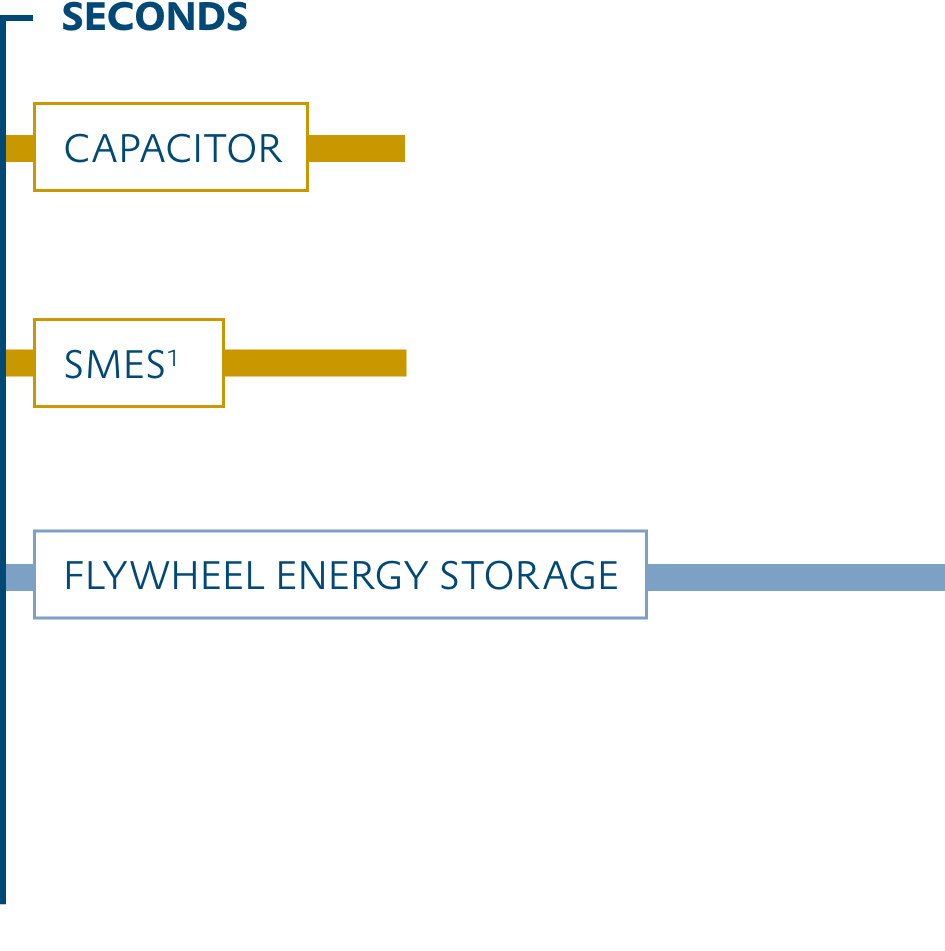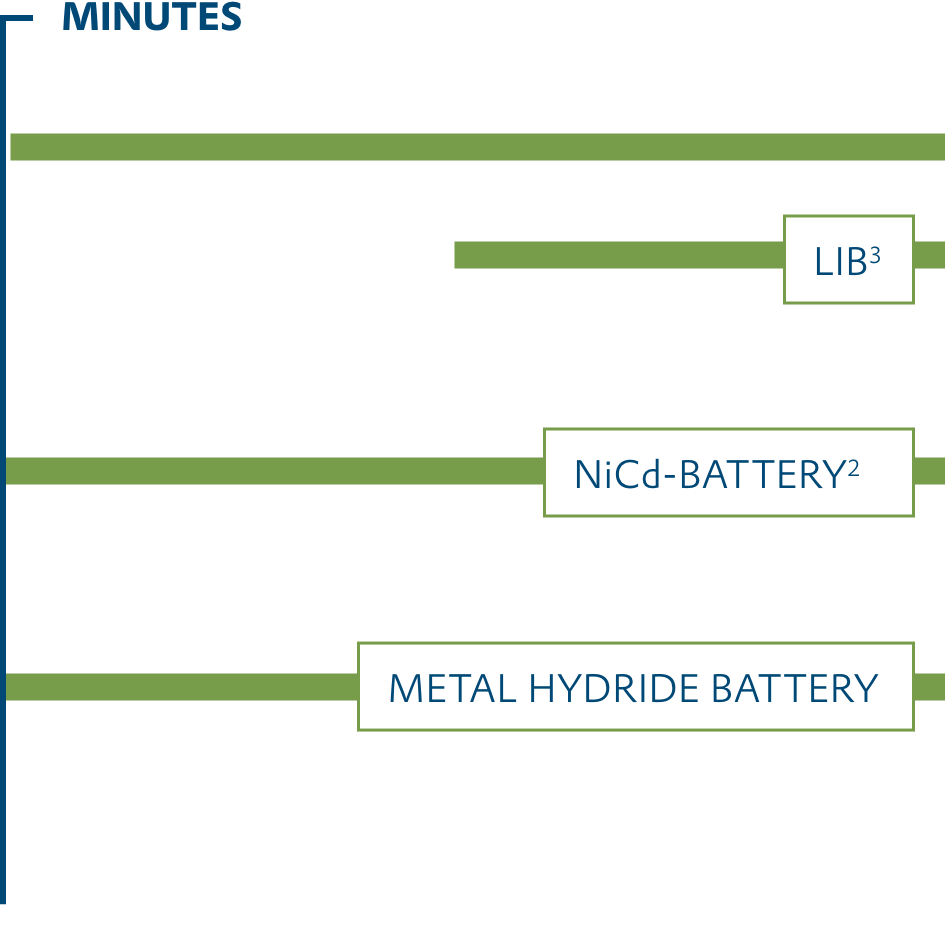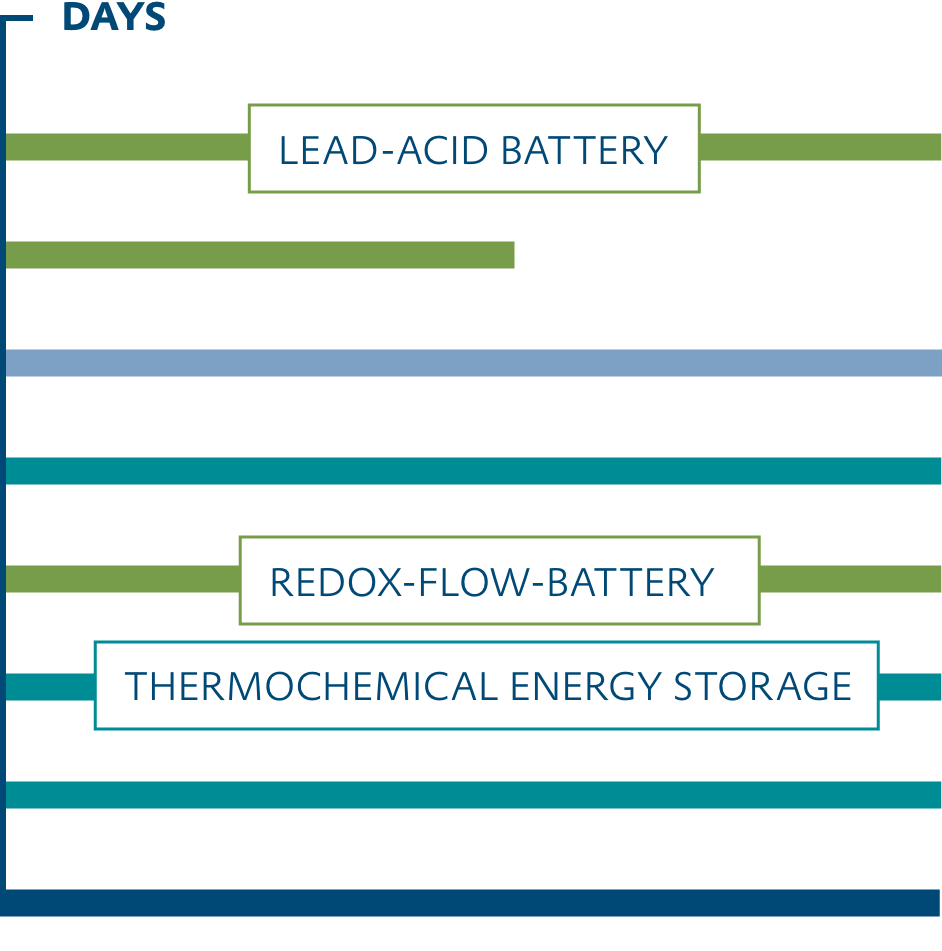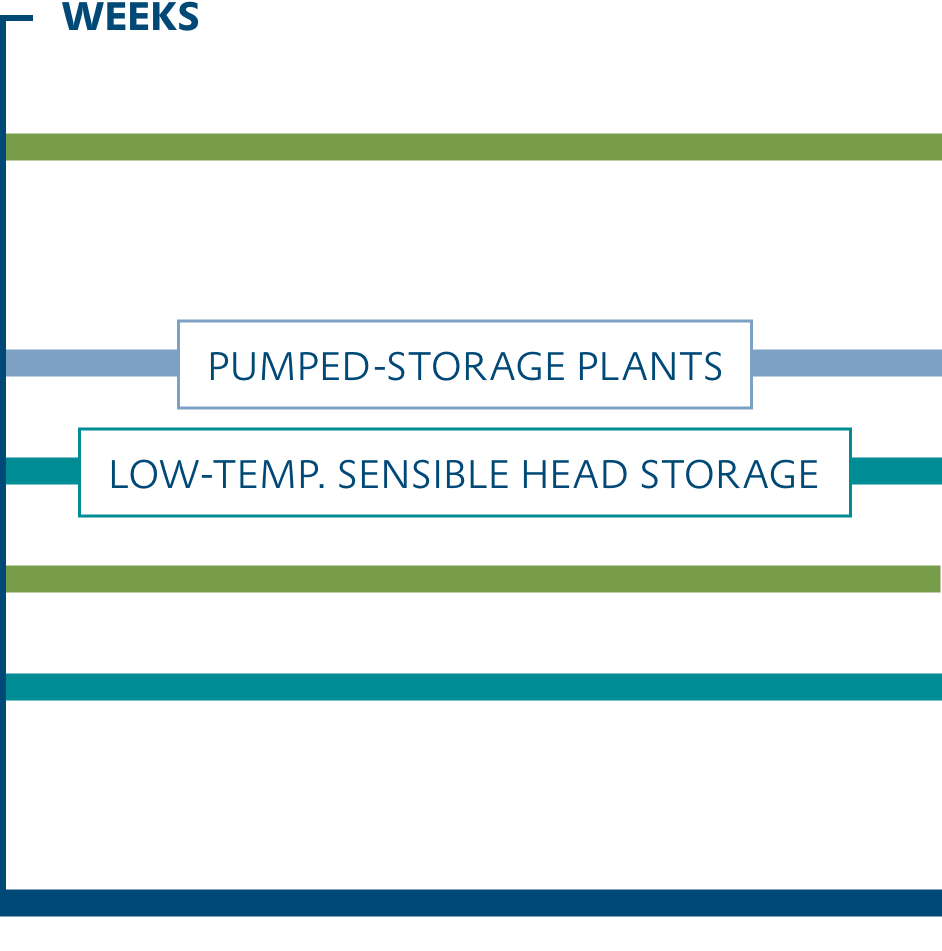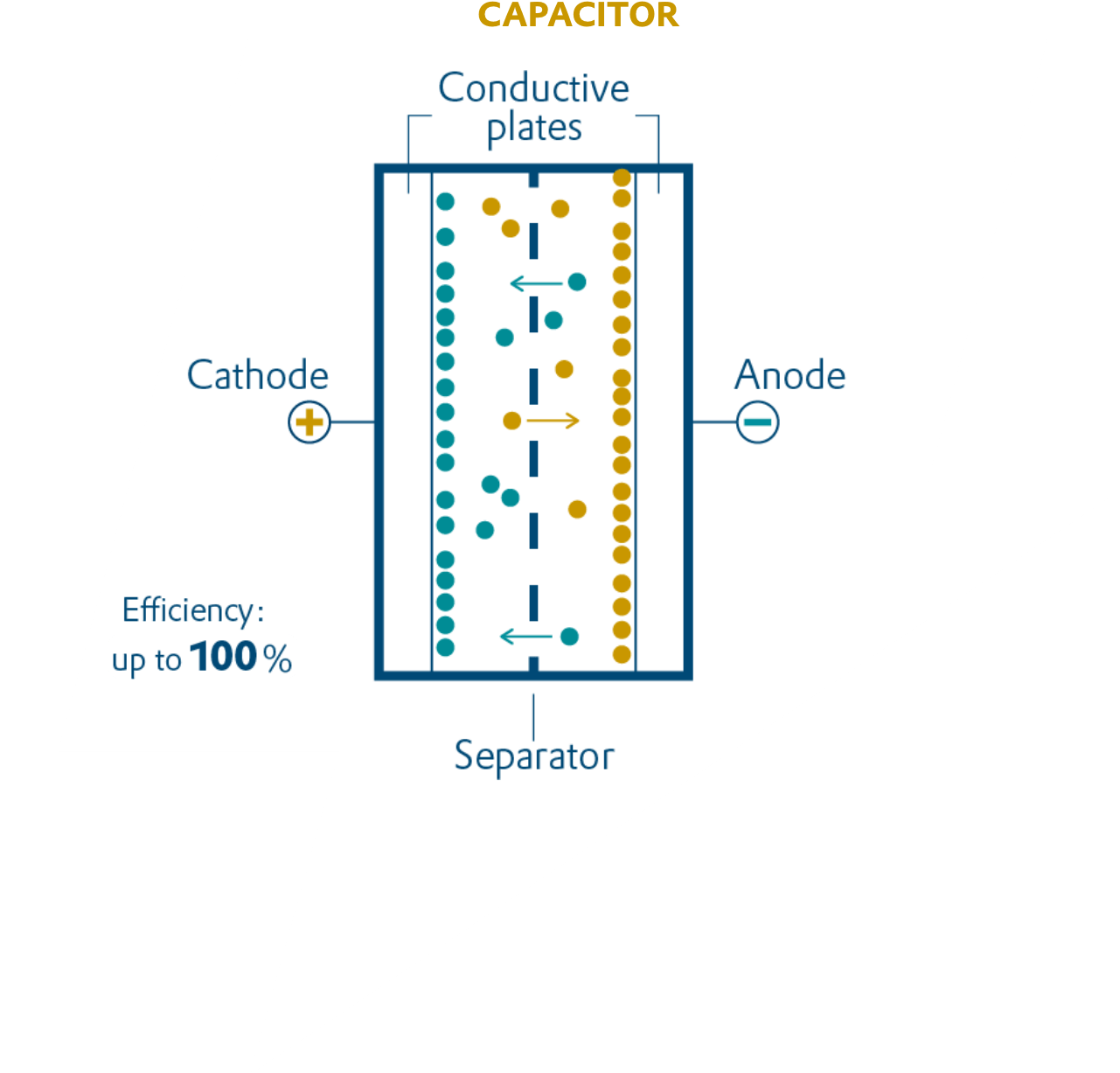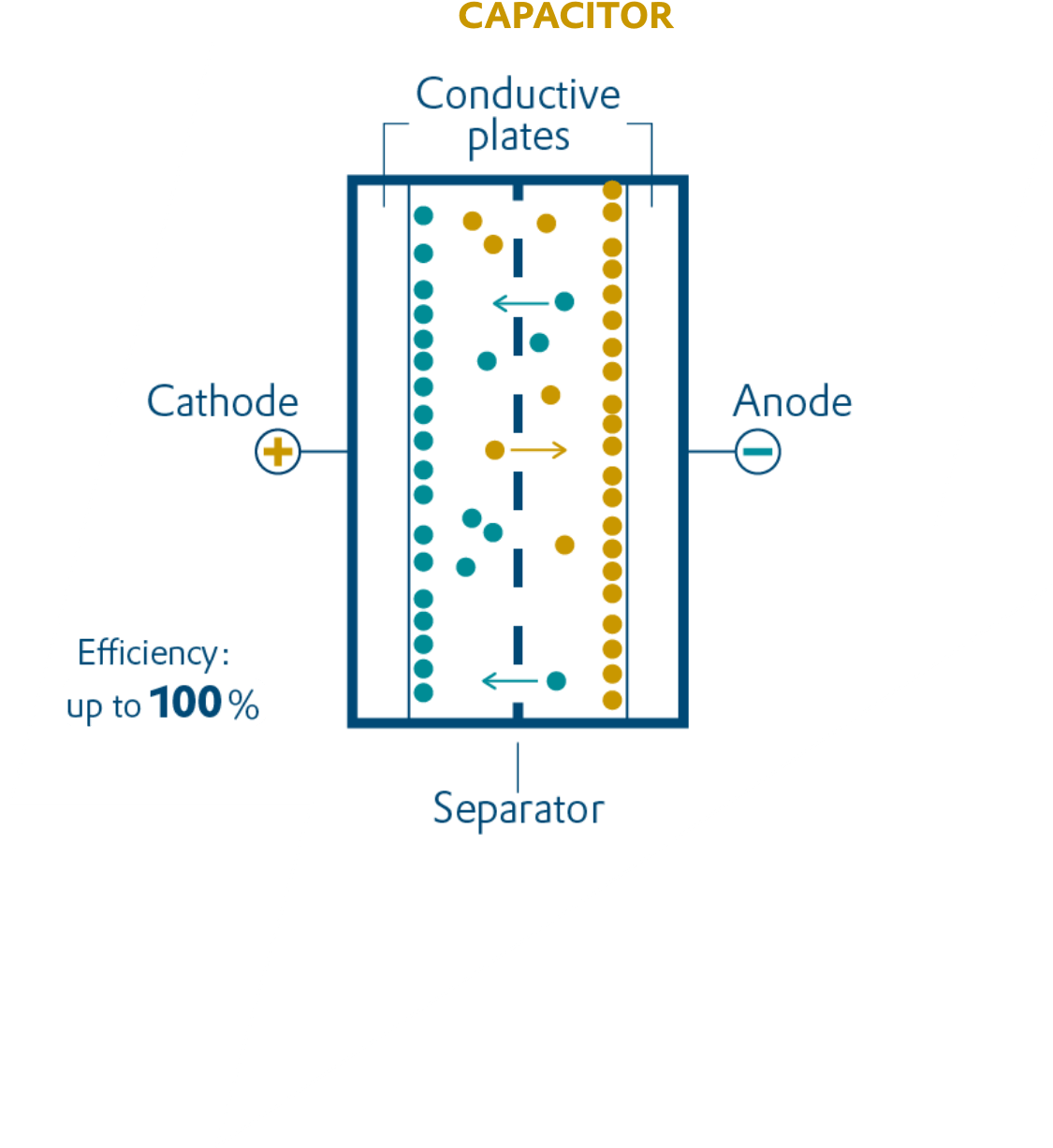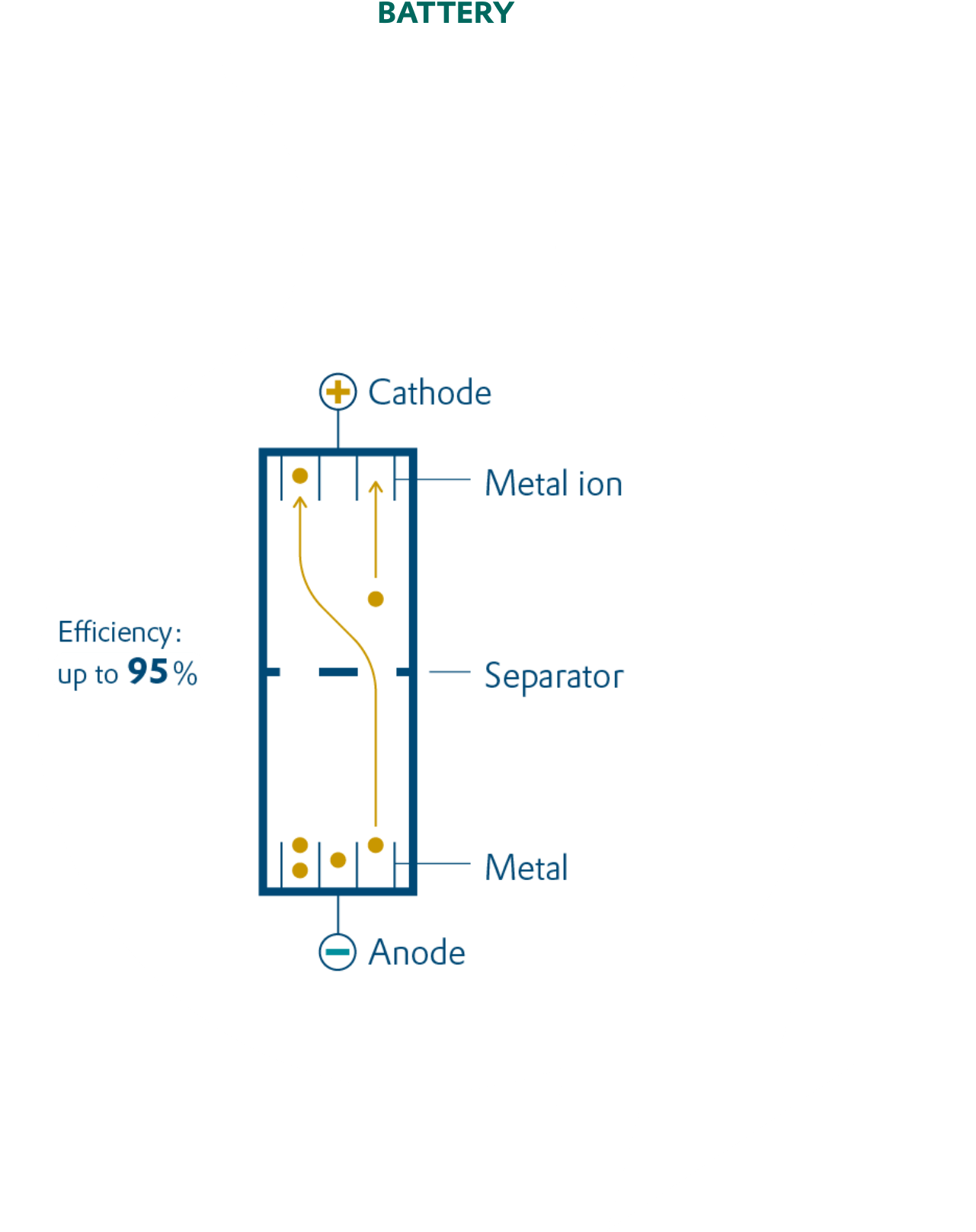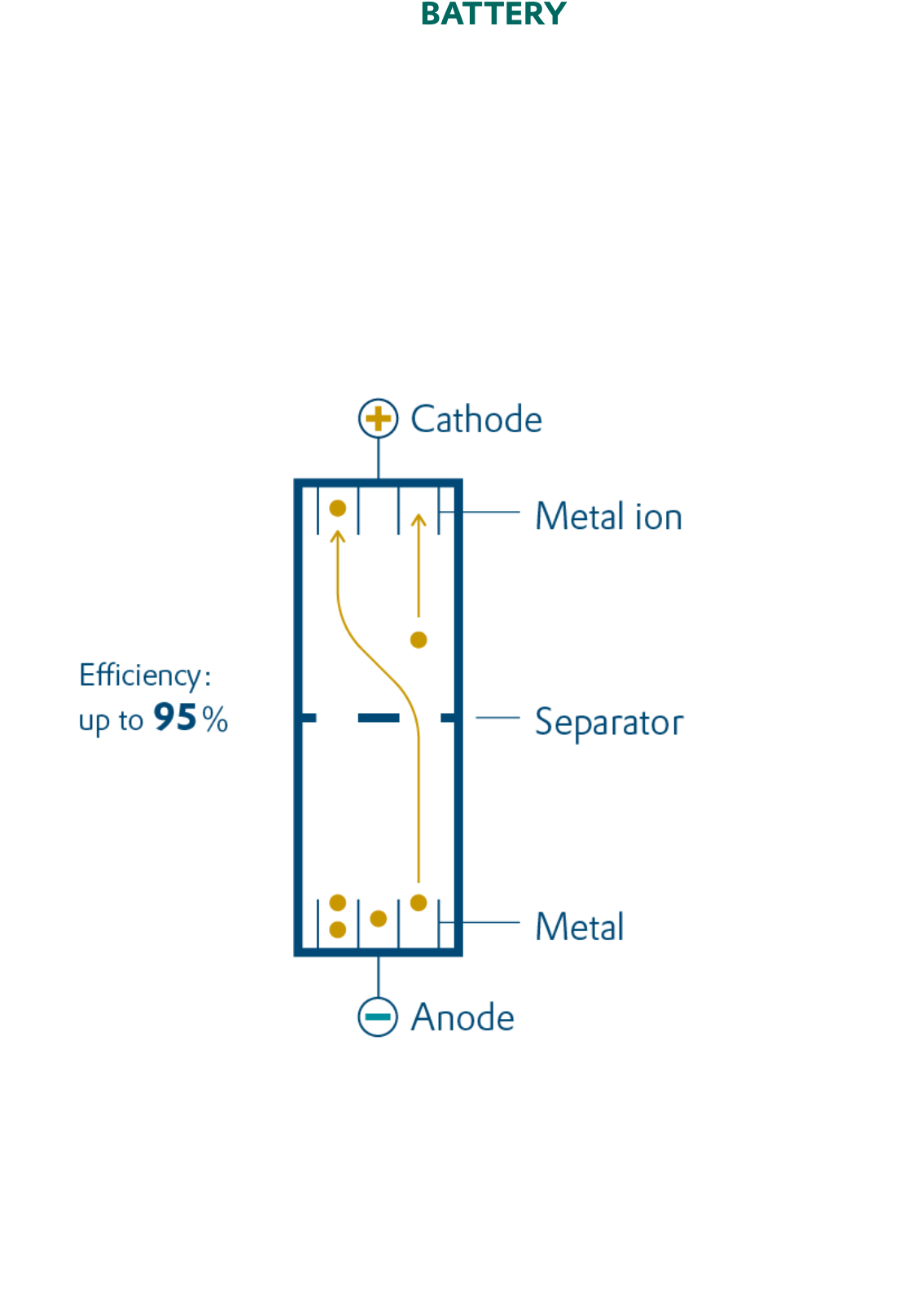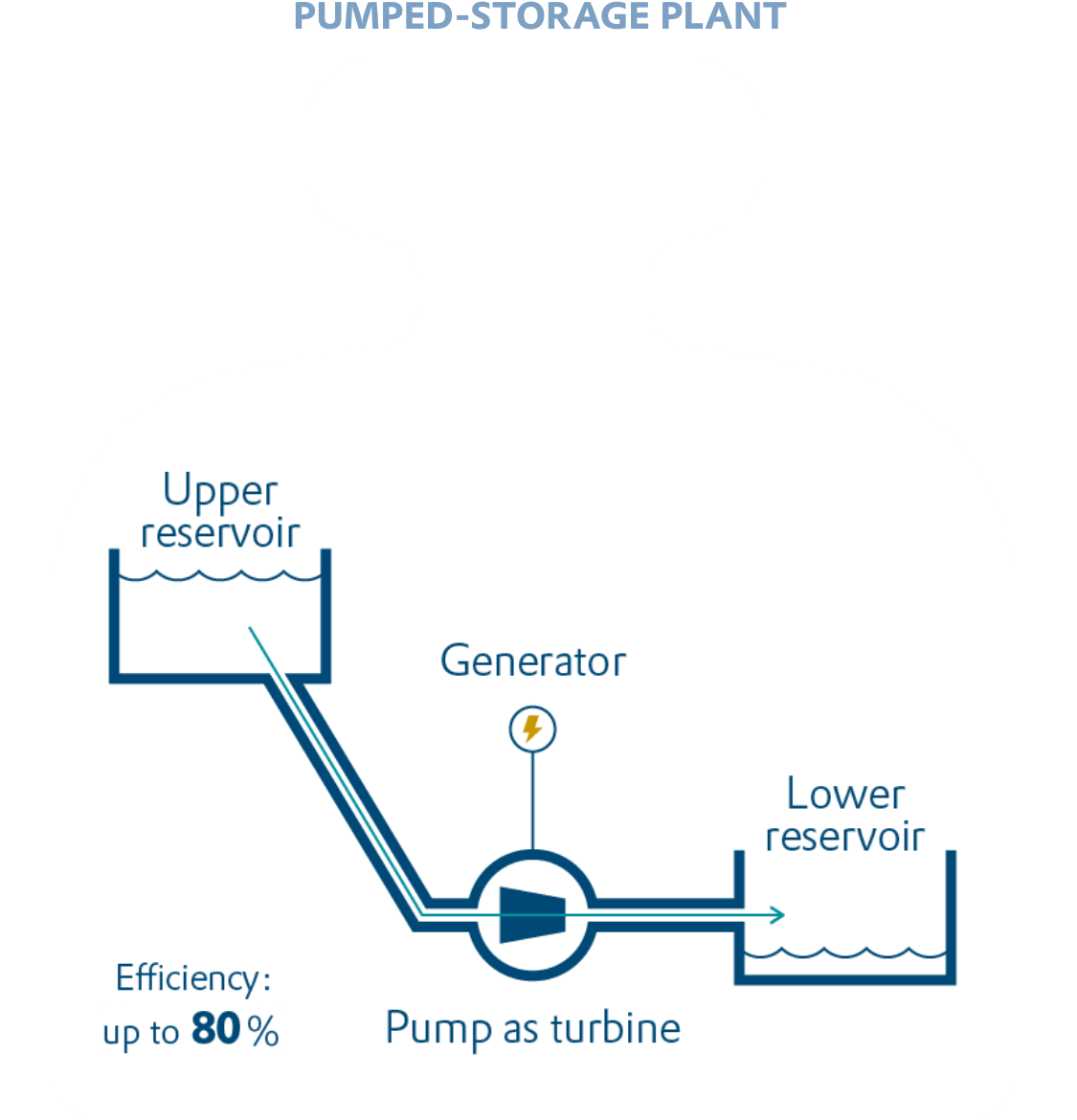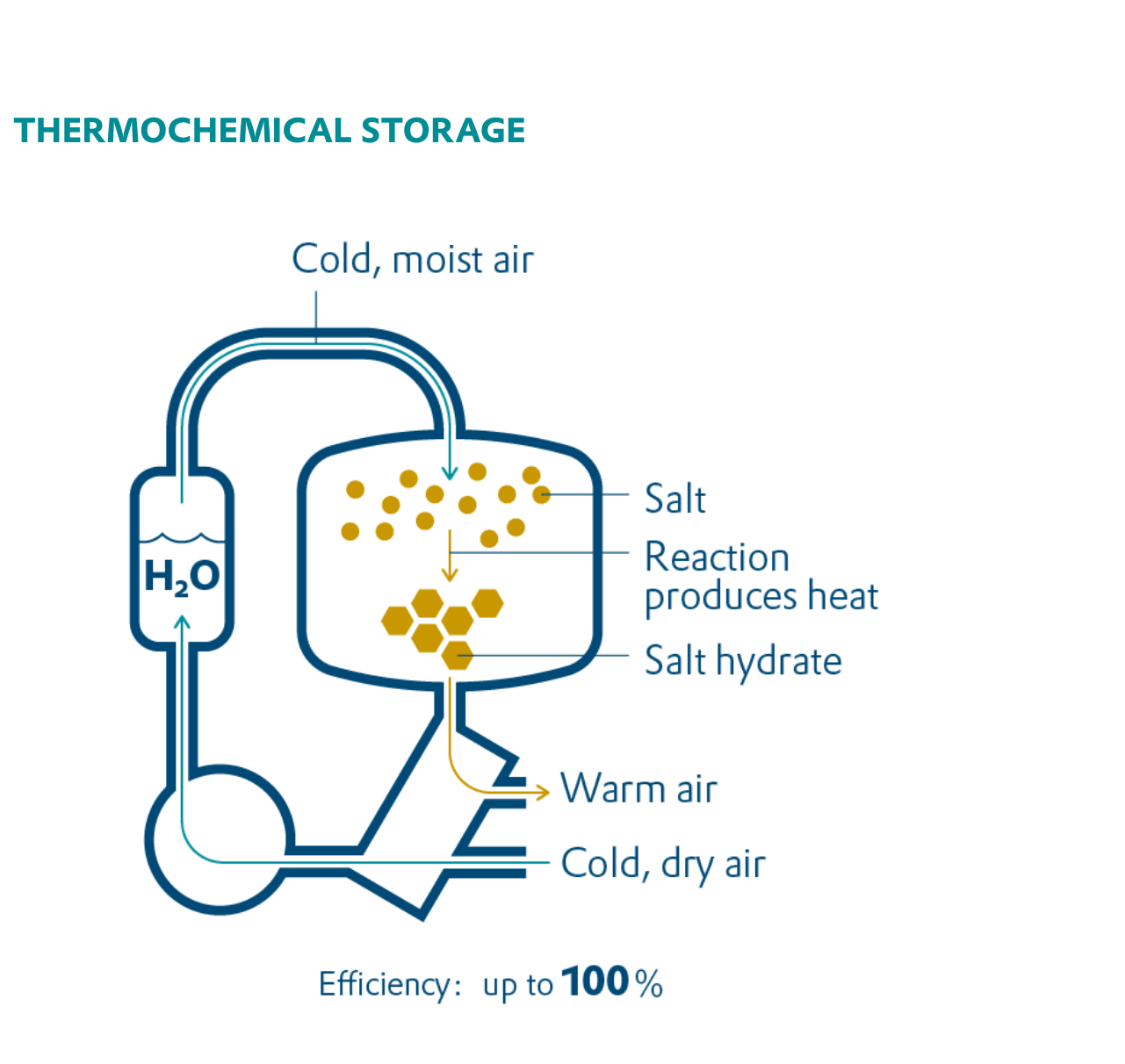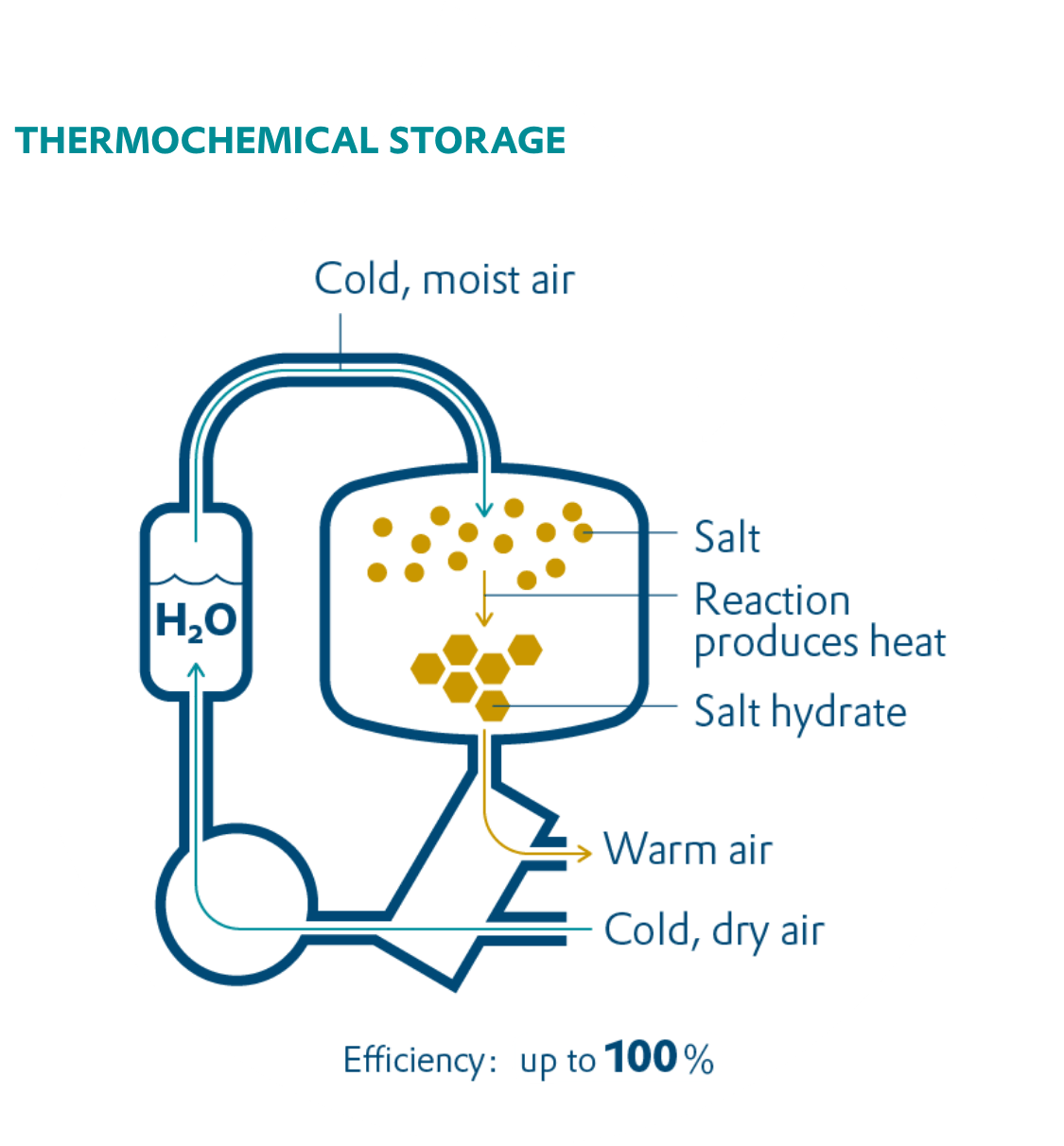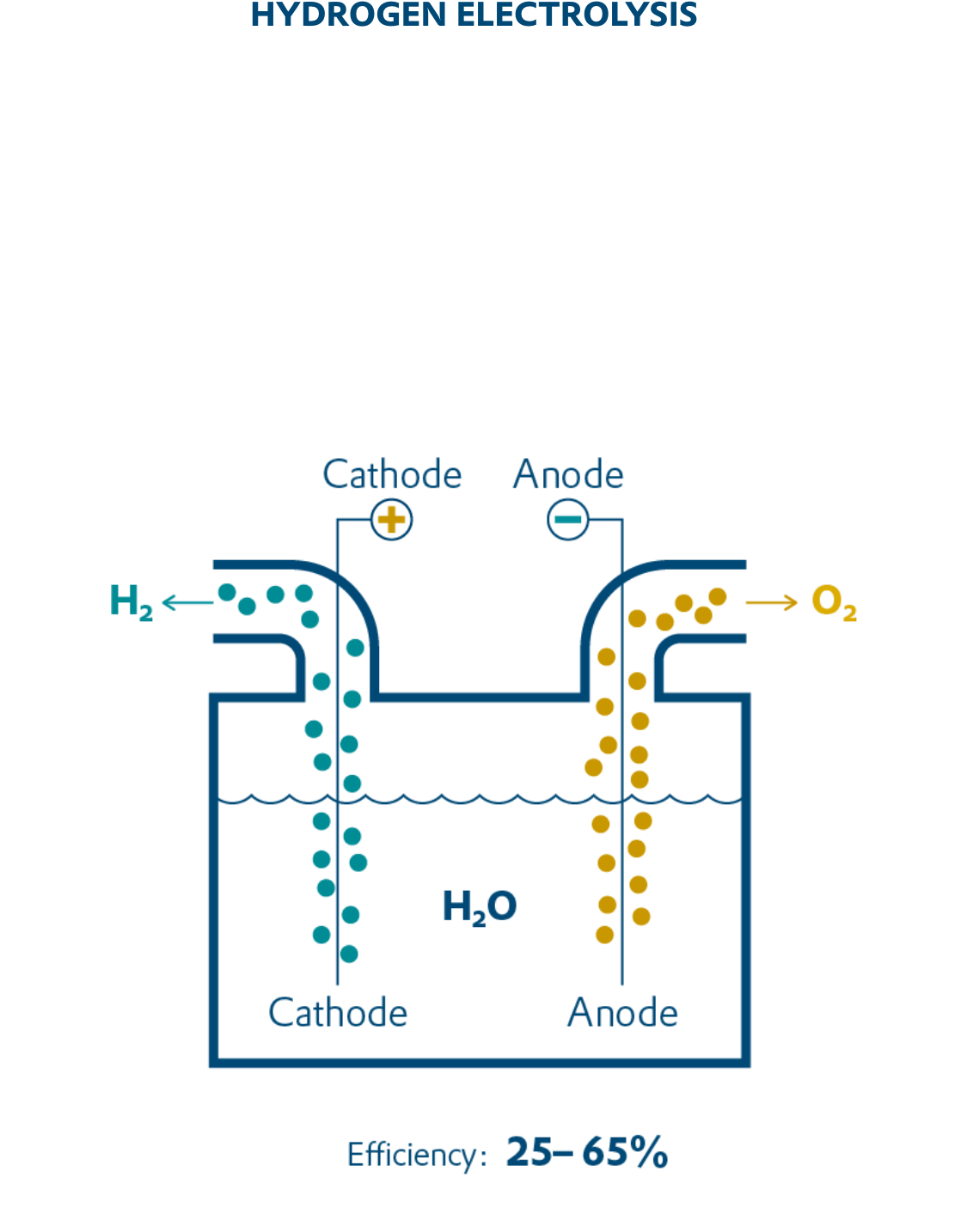An overview of energy storage systems
The energy transition can only succeed with the help of high-performance storage technologies. Various technologies are available for this purpose, depending on the area of application. But how do these technologies work, where are they used, and what are their advantages and disadvantages? An overview of the main techniques
TEXT LUCAS RIEMER
ILLUSTRATION MAXIMILIAN NERTINGER
Applications Short-term stabilization of power grids during peak loads; supplements batteries in hybrid and electric vehicles; bicycle stand lights (double-layer capacitors)
Advantages Very high efficiency, rechargeable many times, energy is quickly available
Disadvantages High level of self-discharge, SMES needs to be cooled to below -200 degrees Celsius
Applications Electric vehicles and small devices (primarily Li-ion batteries), offsetting grid fluctuations
Advantages High level of efficiency, fast response time, low self-discharge
Disadvantages Fire hazard (Li-ion batteries), high cost and maintenance (redox flow battery)
Applications Offsetting of peak loads in the power grid, safeguarding of the electricity supply, e.g. in hospitals (flywheel energy storage)
Advantages Relatively inexpensive, large amounts of energy can be stored for long periods (pumped storage), fast access (flywheel energy storage)
Disadvantages Impact on landscape (except flywheel energy storage), high level of self-discharge (flywheel energy storage)
Applications Heating of process water and buildings, solar thermal power plants
Advantages Robust technology, low costs
Disadvantages High energy losses in some cases due to waste heat.
Applications Storage of surplus electricity from renewable sources
Advantages Storage possible for an unlimited time, easy to transport
Disadvantages Because hydrogen can rarely be used directly, it has to be converted further (e.g. into synthetic gasoline), which decreases its efficiency
PUBLICATION DATE
17th April 2020

Batteries
Stored Power
Researchers are working on innovative energy storage systems—and discovering new potential in established technologies.
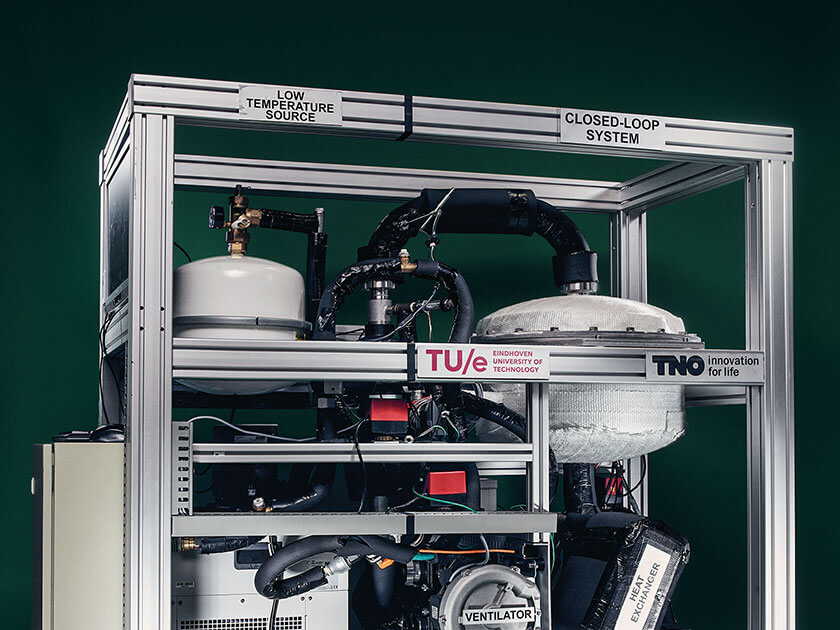
The energy transition
Salt solar heat store
How researchers from Eindhoven intend to use potash to revolutionize heat storage systems for buildings.

TEG generator
Heat Is Power
TEG-Generators transform waste heat into electricity. They used to be complex to make, but this is now changing.

Nobel Prize 2019
The invention of the lithium-ion battery
How the recipients of this year’s Nobel Prize in Chemistry advanced the development of the lithium-ion battery.


